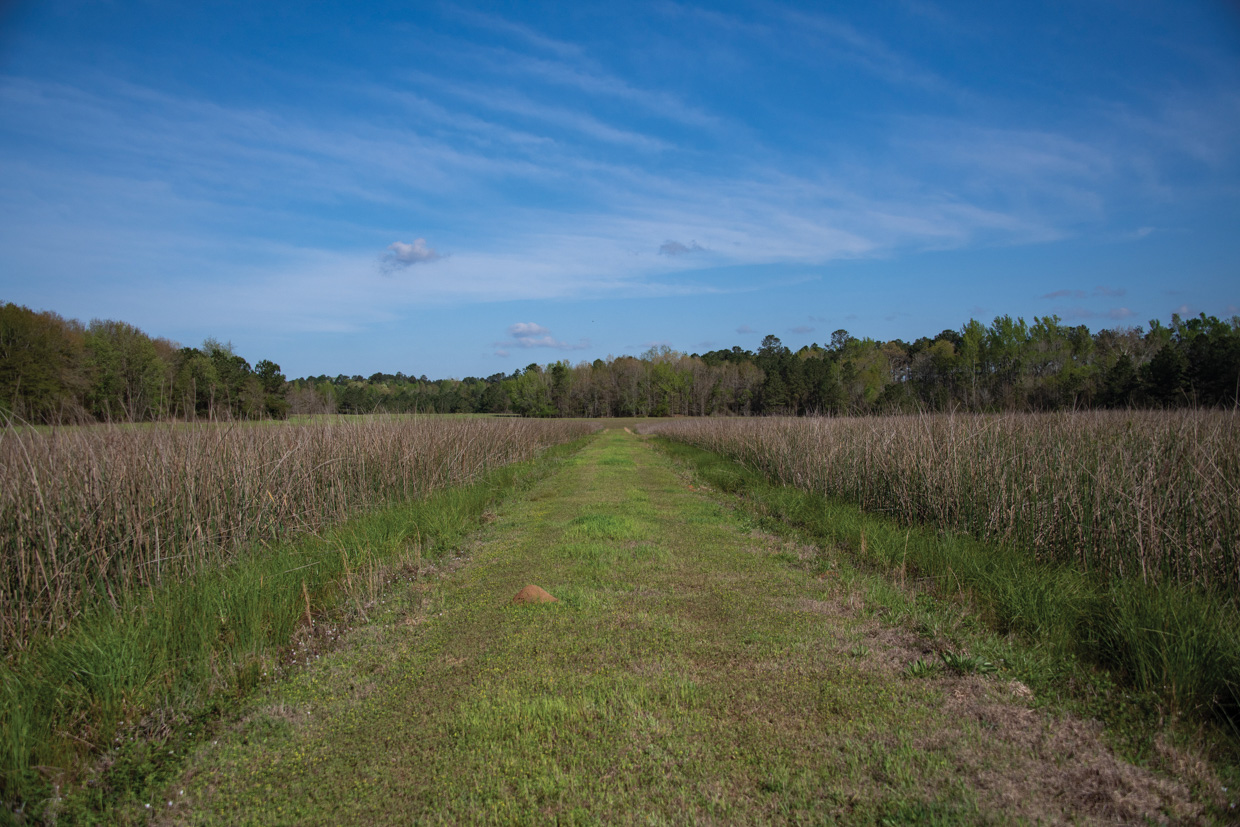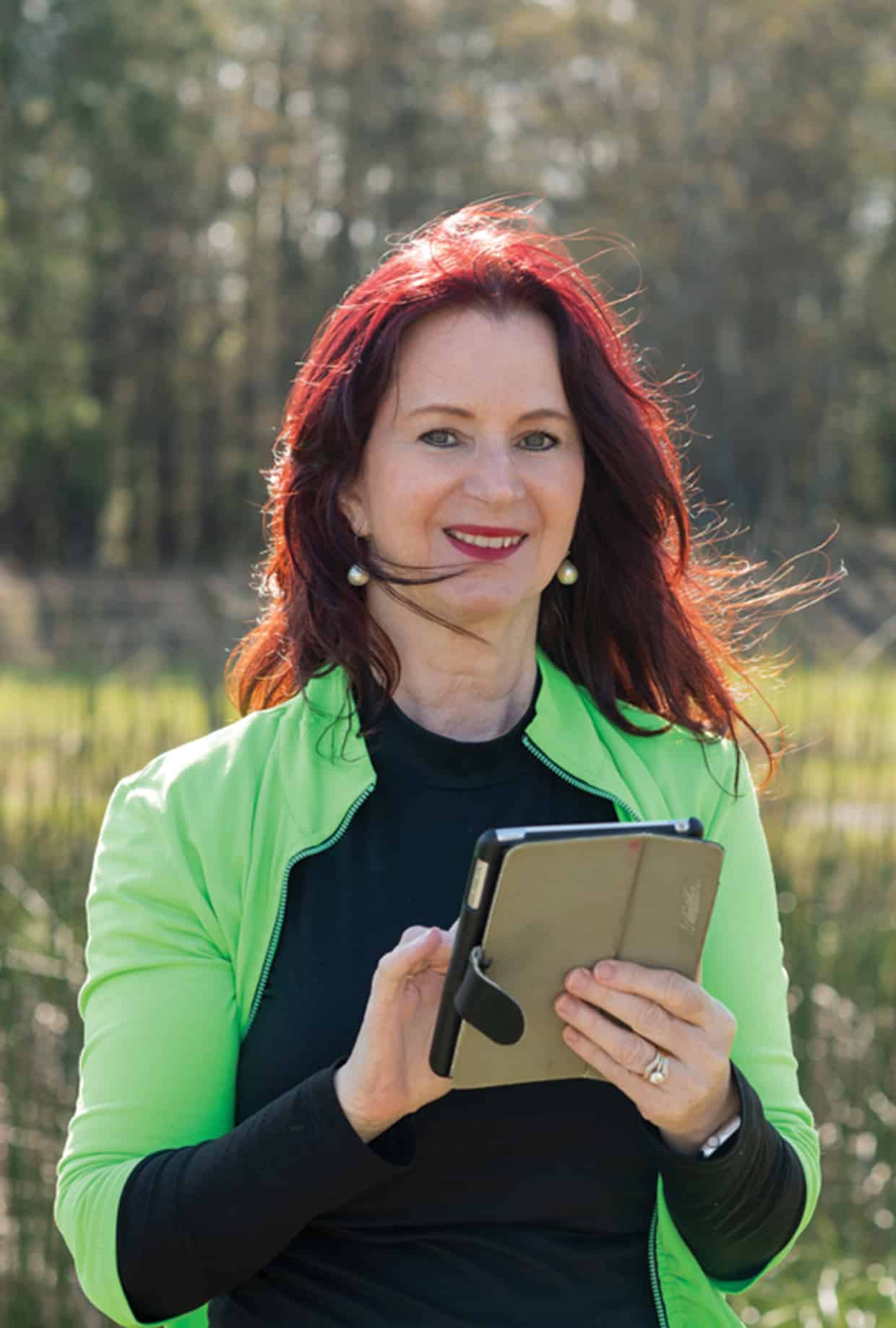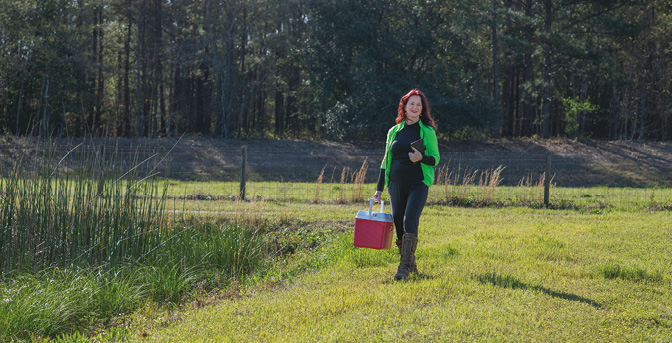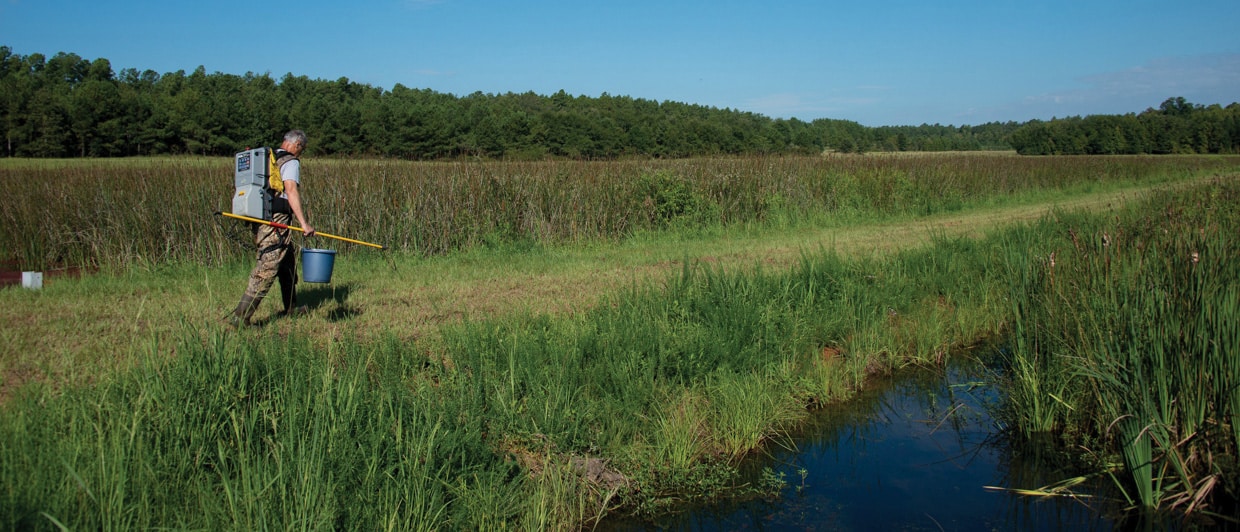Novel Remediation Technology Providing a Path to Cleaner Water
“Everywhere there is contamination in the aquatic environment. We can’t just walk away; we need to really concentrate on trying to bring our water back to a clean state.” – Anna Sophia Knox, Ph.D.

Wetlands constructed on the Savannah River Site for environmental research.
On the afternoon of March 11, 2011, Japan was devasted by a 9.0 magnitude earthquake. The quake caused a 47-foot tsunami wave to crash into the Fukushima Daiichi Nuclear Power Plant, resulting in wide scale contamination of the area’s waterways.
Meanwhile, halfway across the world, Savannah River National Laboratory (SRNL) researcher Anna Sophia Knox, Ph.D., was developing novel remediation technologies for contaminated aquatic environments. Knox says her technique, known as Multiple-Amendment Active Caps or MAAC Technology, could help remediate the contaminated waterways near Fukushima, as well as the many other contaminated bodies of water closer to home.
A multiple-amendment active cap MAAC consists of a mixture of amendments combined with sand or other neutral materials such as clay or clean soil/sediment. MAACs represent a onestep, simple, and versatile technology that permits the rapid construction of active caps to meet diverse remediation challenges. MAACs incorporate chemically active amendments to remediate a variety of contaminants and can include bentonite (to resist erosion). Advantages include low cost, simplicity, potential to remediate a mix of contaminants, easy adaptation to site requirements, and lack of harmful environmental impacts.
Recent studies indicate more than half of the lakes and rivers in the United States have unsafe levels of contaminants like mercury, arsenic and lead. The presence of unsafe levels of heavy metals and radioactive elements in water can have serious impacts on the biota in the effected waterways, and the people who drink the water or consume the impacted organisms.
“Everywhere there is contamination in the aquatic environment. We can’t just walk away, we need to really concentrate on trying to bring our water back to a clean state,” says Knox.
Knox has a master’s degree in geochemistry and mineralogy, and a doctoral degree in agronomy and soil science, the perfect combination to study how natural minerals can be applied in remedial technologies. Upon her arrival at SRNL nearly 20 years ago, Knox worked on the remediation of legacy cesium, one of the same radioactive elements released during the Fukushima disaster, from the cooling systems at Savannah River Site. Knox and her collaborators (Dr. Hinton and Dr. Kaplan) discovered that adding a thin layer of amendments (e.g., clay mineral illite) on top of contaminated sediments in Pond A, a legacy cooling pond, could sequester the radioactive cesium and lower the cesium concentration by 25- to 30-fold in water, 2- to 3-fold in fish and 4 to 5-fold in aquatic plants.
“That was a very exciting project for me and that led to 15 years of research into a multiple-amendment active cap or MAAC technology,” says Knox. “The basic concept is that we create a barrier with contaminant absorbing amendments between the water and the sediments.”
Historically, there were two options for environmental clean-up of aquatic environments: environmental dredging, which is very expensive and can lead to the additional releases of contaminants, and monitored natural recovery, which is only suitable for areas with low levels of contamination. In the 1980s, researchers began developing passive caps, where a layer of material is placed on the top of sediments. This layer acts as a physical barrier that prevents the release of contaminants and slowing the transport into the water column. Knox’s research sought to improve upon the passive cap concept.

Researcher Anna Sophia Knox has developed novel remediation technologies for contaminated aquatic environments.
“We were investigating how we could enhance the performance of these barriers. There was really only one parameter we could change – absorption of the contaminants by the material that we place in the cap,” says Knox. “So, for passive caps we use clean sediment or sand and for active caps we use chemically active materials – minerals or modified minerals by surfactants, etc. – to absorb specific contaminants.”
During her early research on multiple amendment active capping, Knox determined how to best deploy the technique, as well as which amendments worked best for different contaminants.
“We didn’t know if, when we combined amendments, they would need to be in individual layers, like a sandwich, or mixed together. We also didn’t know how much we would need. We tested it for five years and found a mixture with clean sediment or sand works very well. We also found that a very small amount is all that is needed to remediate contaminated sediment, which makes it a very cost effective and efficient method,” says Knox.
Knox has presented at sessions across the globe and published in an array of journals; however, she says more awareness of MAAC Technology and its benefits is needed.
“Even in the US, the traditional approach to contaminated sediments, environmental dredging and passive caps, is still being used,” says Knox. “We need to communicate and convince regulators that this method is cheaper and more effective.”
Knox is optimistic that there will soon be more deployments of MAAC Technology, and she’s even had discussions with colleagues working on the clean-up in Fukushima. Long-term, she hopes her work will have the legacy of creating a cleaner environment for future generations.
“SRNL was founded with the mission to not only support legacy clean-up at Department of Energy sites, but also to work toward a cleaner environment for everyone. Remediation technology, like multiple-amendment active capping, is providing a solution to help bring contaminated environments back to their natural states so biota and humans can live in harmony.”

Anna Sophia Knox in the field.
The Power of Plants
In addition to her work on multiple-amendment active capping, Knox has also helped develop and maintain constructed wetlands on the Savannah River Site. The A-01 constructed wetland treatment facility (CWTF) is an 8-acre, artificial wetland designed to remove metals from industrial runoff using the natural filtering power of aquatic plants. Built in 2000, it was the first constructed wetland permitted in South Carolina to serve as a National Pollutant Discharge Elimination System (NPDES) treatment facility and, at the time, was the largest constructed wetland in the world explicitly built to remove metals from industrial effluent.
“The planted bulrush stands in the A-01 wetland utilize the natural biogeochemical cycles within this aquatic system to bind the metals to sediments and soils, with some uptake by the plants themselves,” says Knox. “The system has been in place for more than 20 years and is still working very well.”
Fellow SRNL researcher and project lead Jack Mayer says, “The A-01 constructed wetland is a groundbreaking and awardwinning compliance facility that has served the Savannah River Site superbly over the past two decades, continuing to provide significant cost savings over the operations and maintenance costs of the other compliance technologies that were being considered back in the late 1990s for treatment at this NPDES outfall.”

SRS’s A-01 constructed wetland photo: Savannah River Site photography